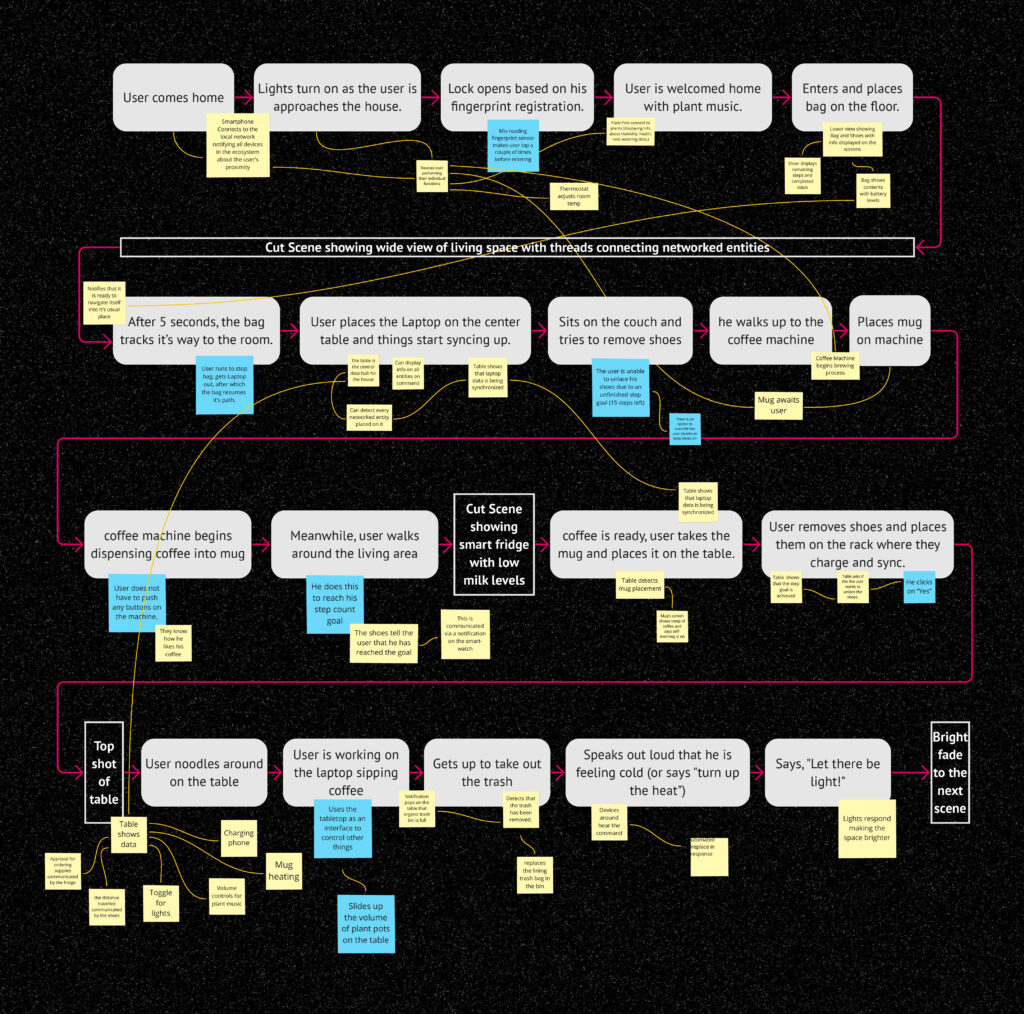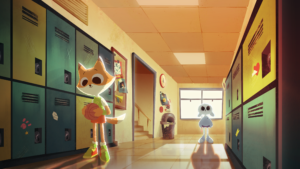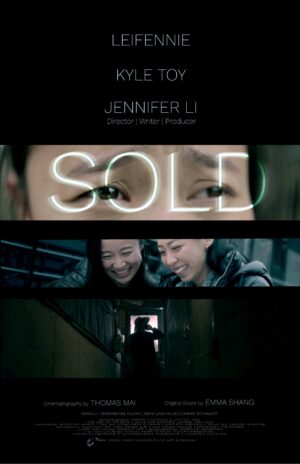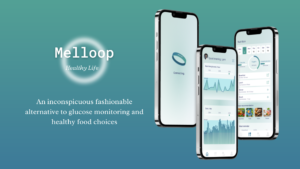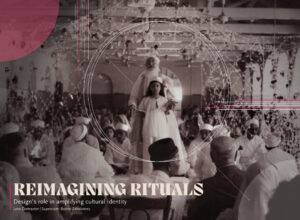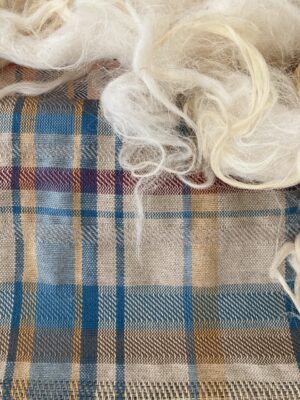Networked Entities & Critical Design: Exploring the evolving near-future of networked objects
Aamir Salim Rangwalla
See it On Campus: Level 2
Visitor InfoBeside "Re-Imagining Rituals". The space between the library and the aboriginal gathering place.

Thesis Abstract
Rapid technological advancements, tending toward an interconnected world automatized by communication between all networked objects, are gradually becoming the standard. This results in evolving human behaviours — technological artefacts emerge and the behaviour of technology towards humans shift. As these technologies become more prevalent in our surroundings, examining the ontological relationship between humans and user-centred networked technologies helps explore and understand the evolving concepts of agency and autonomy. With the rise of the Internet of Things (IoT), humans and smart, quantified, and generative technologies are becoming increasingly linked, co-evolving an interdependence of daily routines, behaviours, and sense of self.
To offer a comprehensive view of our engagement with technology and to delve into the impact on daily human lives, a multidisciplinary approach, including Research Through Design, Critical design/making, Speculative Fictions, provocations, curatorial practices, observational writings, and performances were employed.
A near-future video prototype employing design fiction (Bleecker, 2009), speculative approaches, and dramaturgy (Goffman, 1959) provides an engaging exploration of potential implications — also, consequences of increased connectivity and automation in our lives. The concept of “networked entities” is proposed as a valuable addition to the design methodology, situating the outcome in a plausible (Dunne and Raby, 2013) near-future.
Networked entities that are conceived from the analysis of current behavioural patterns of a user are speculated to exhibit a heightened sense of agency and autonomy; this transforms passive objects in our lives into “active participants” (Bleecker, 2006). These objects adapt to our needs and preferences, making decisions on our behalf. This shift in the roles and capabilities cultivates discourse between relationships and expectations with technology and responsibilities with use.
New perspectives on how to approach and understand the ontological relationship of humans and networked entities are explored to contribute to the broader conversation of the impact of this ever-present connection. Potential implications of increased connectivity and automation provides valuable insights for designers, policymakers, and users of technology as we move towards an increasingly interconnected world.
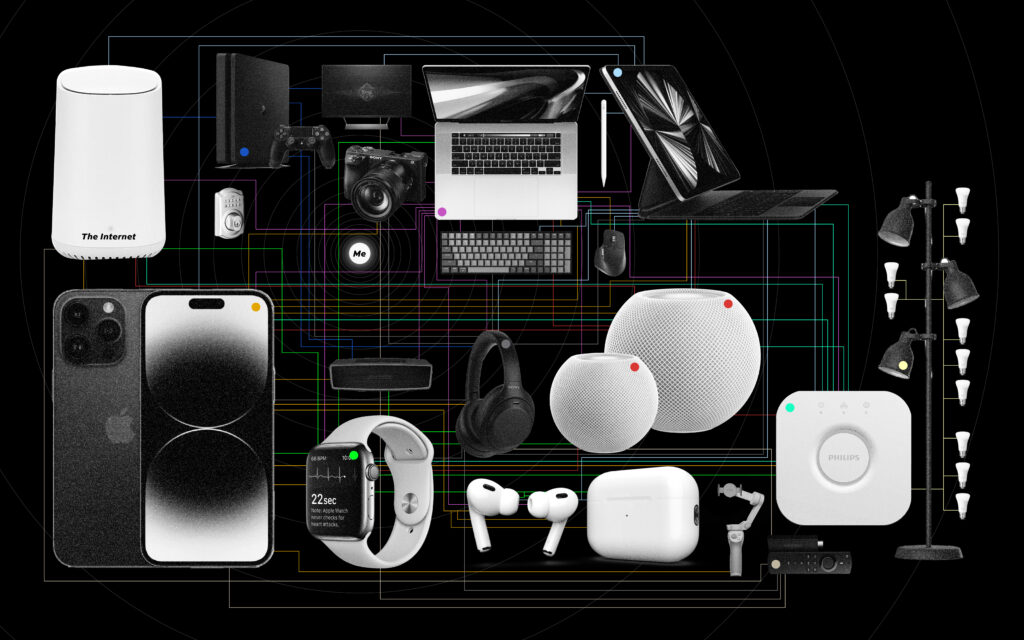
Analysing the current interconnectedness of artefacts in the researcher’s personal ecosystem, leading to imagining a near-future scenario where every mundane artefact is a networked entity.
Speculative Micro Fictions
To showcase the conceptual approach taken with this research, I workshopped an explorative exercise with two peers. This was carried out in the form of a written exquisite corpse. The three of us each began a freeform future-based narrative of approximately 100 words on the future of our relationships with technology. We then passed the narratives and continued the next story with an additional 100 words — each person added a section to each story. This speaks to the concept of design fiction as a form of writing that generates prototypes of alternate realities, experiences, and lifestyles, inspired by the imaginative insights of the author. Building on the concept of an exquisite corpse, it stimulated creativity, posed questions, and facilitated collaboration.
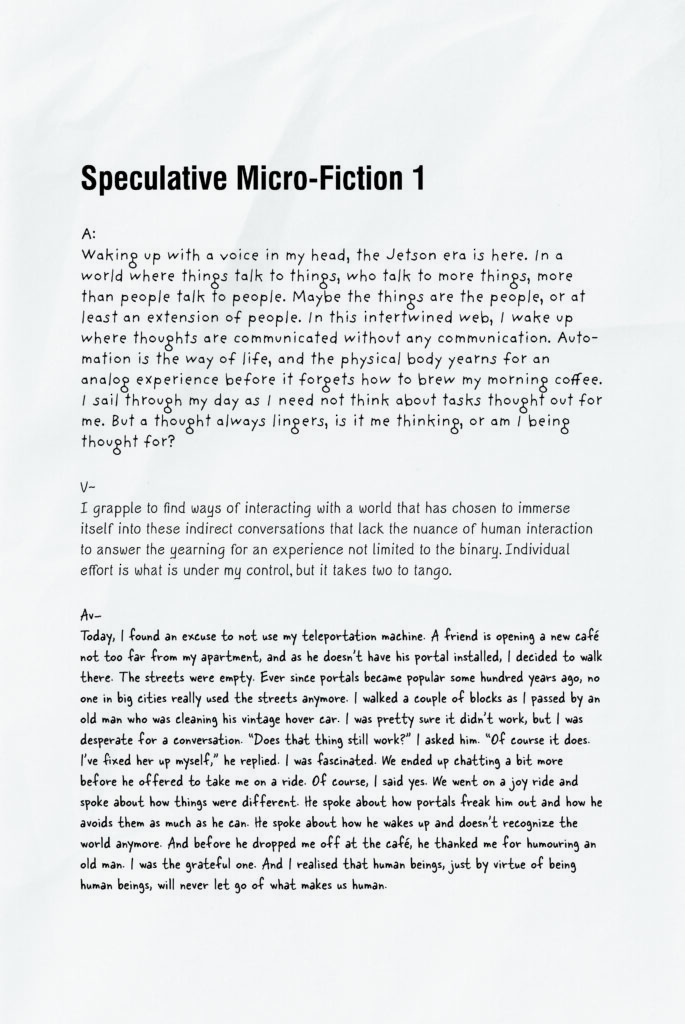
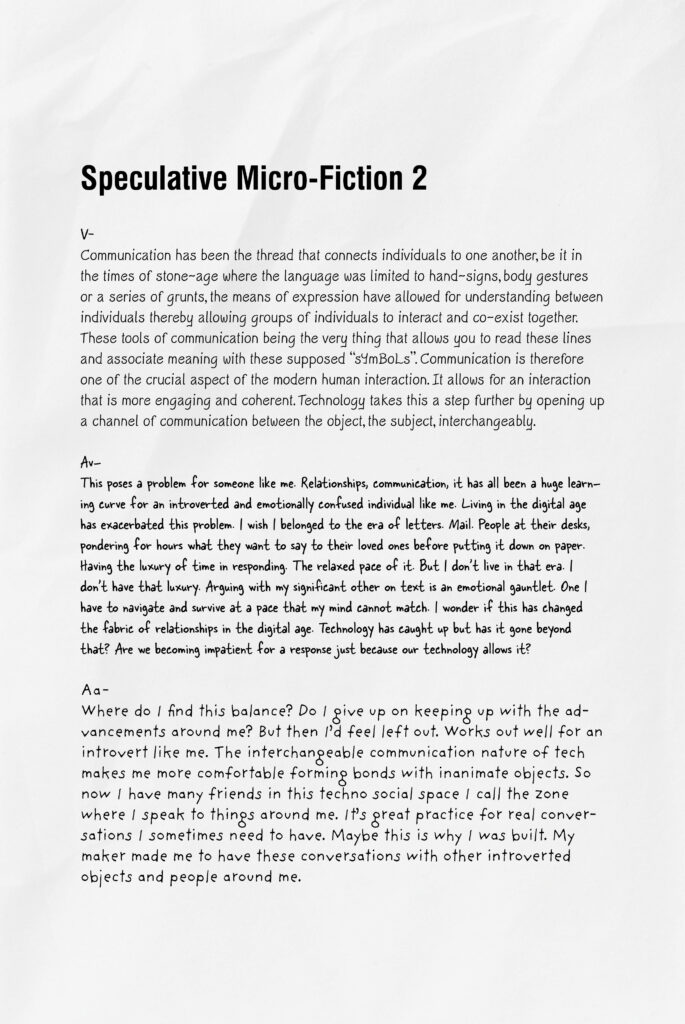
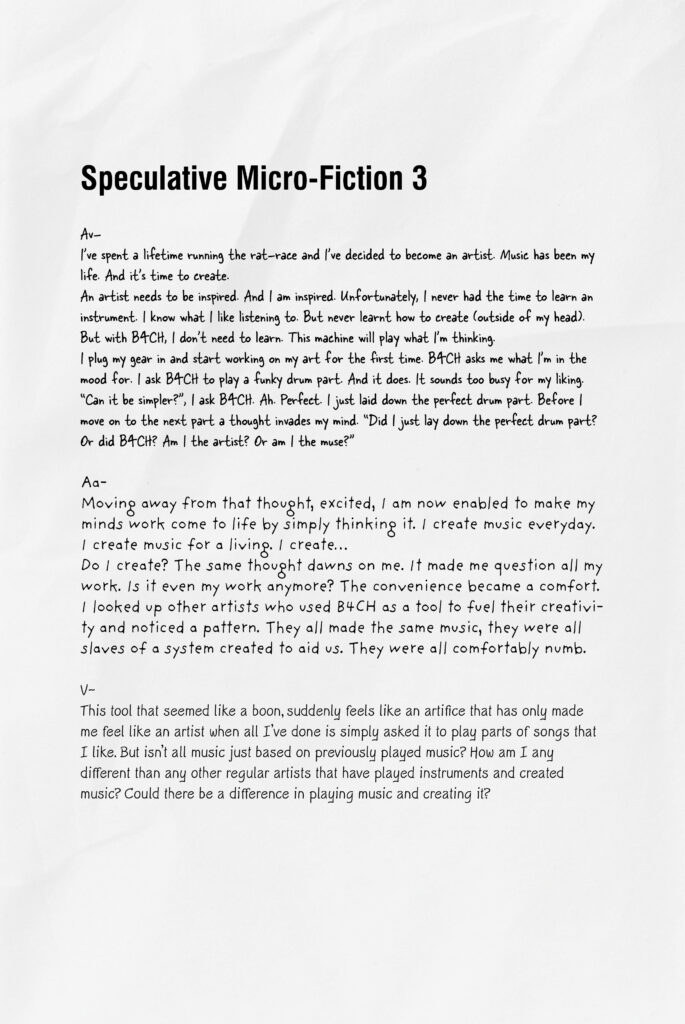
Future-casting process
The process of exploring how various networked entities can be integrated into our daily lives to shape how humans live is crucial to speculating about the near future. To better understand this potential future, current scenarios were studied through employment of auto-ethnographic methods and syntactical textual analysis. The approach involved observing and logging interactions with networked entities, non-networked appliances, and mundane objects in the researcher’s personal space. By segregating these objects and colour-coding the logged actions, usage patterns became apparent, leading to the identification of networked and non-networked objects. This leads to a speculative potential evolution and curation of “things”. Design fiction was utilised to build scenarios, illustrating how these objects could potentially work and be integrated into a networked future.
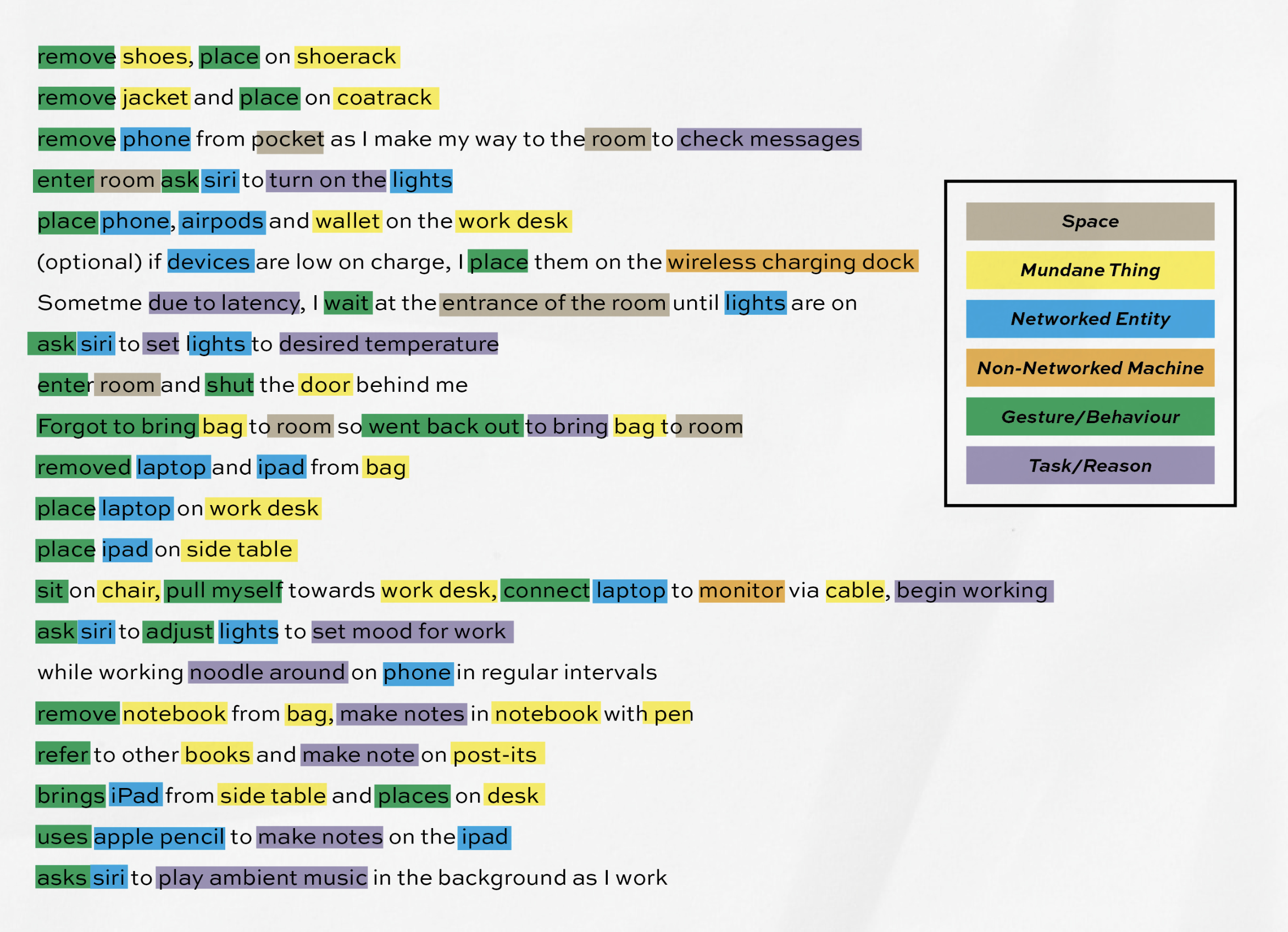
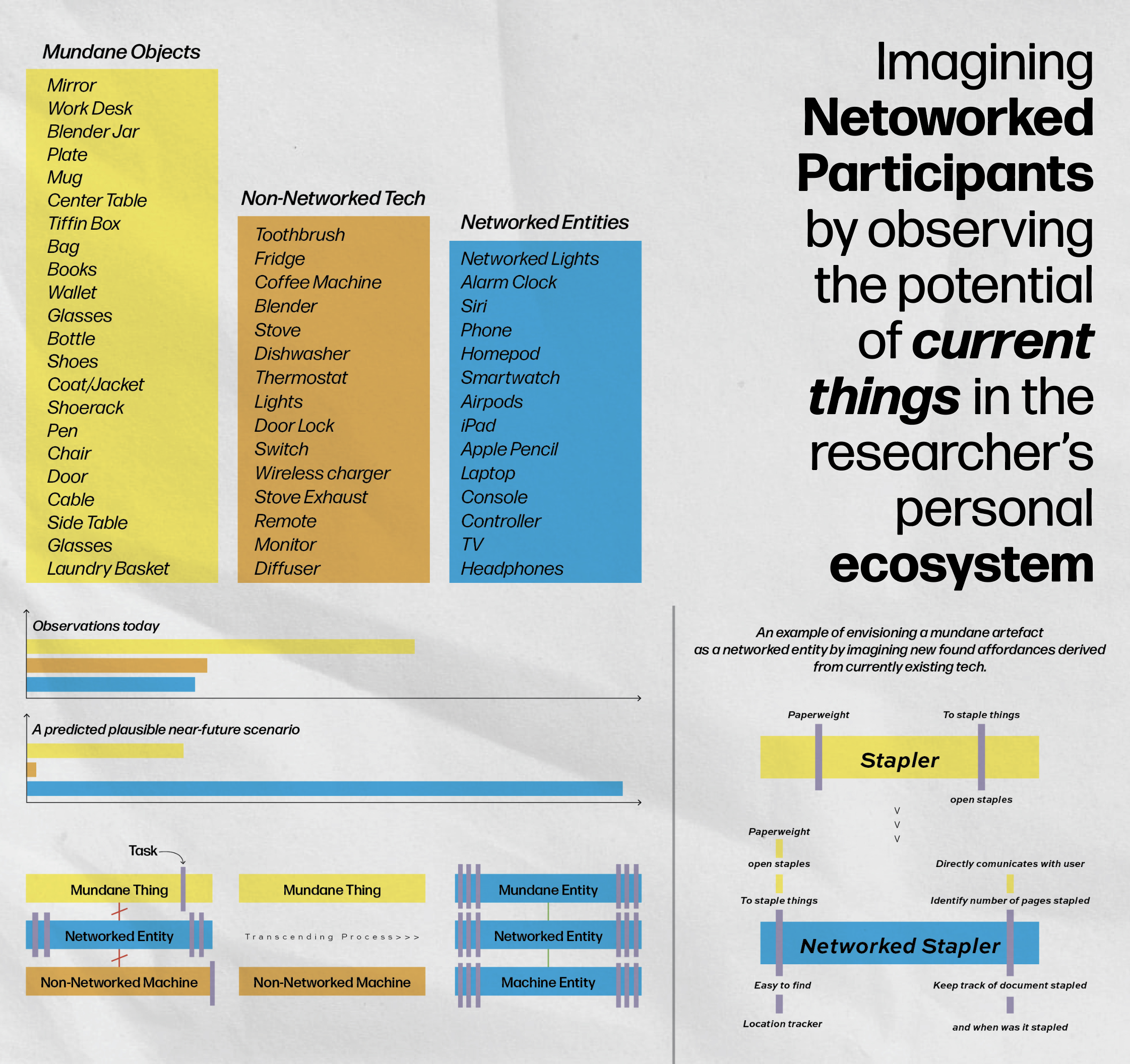
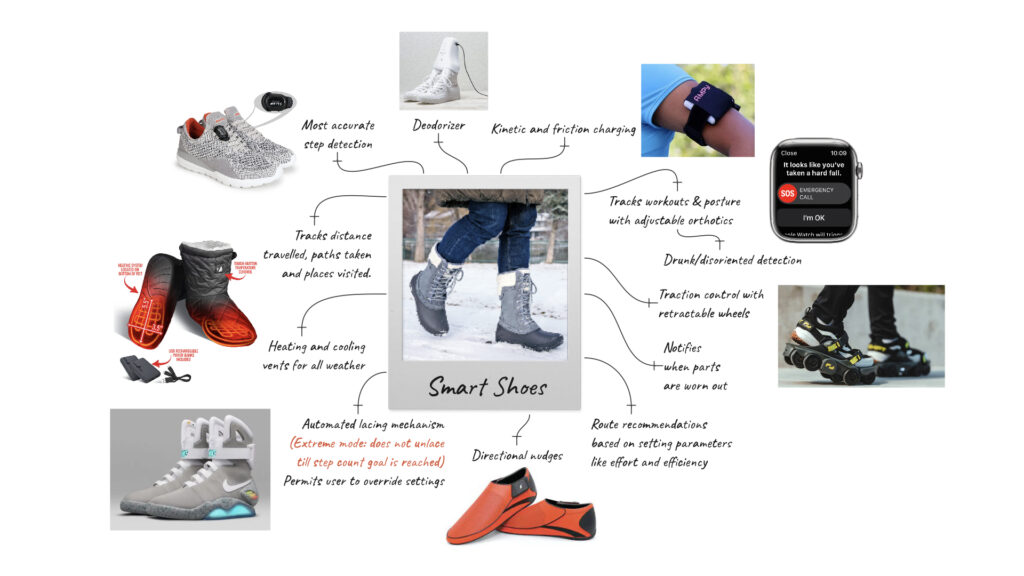
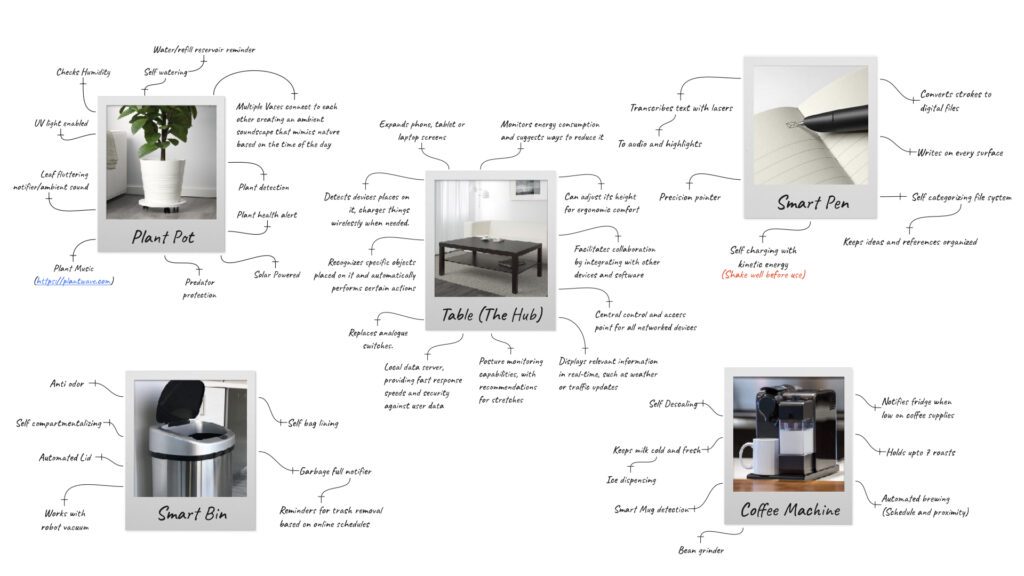
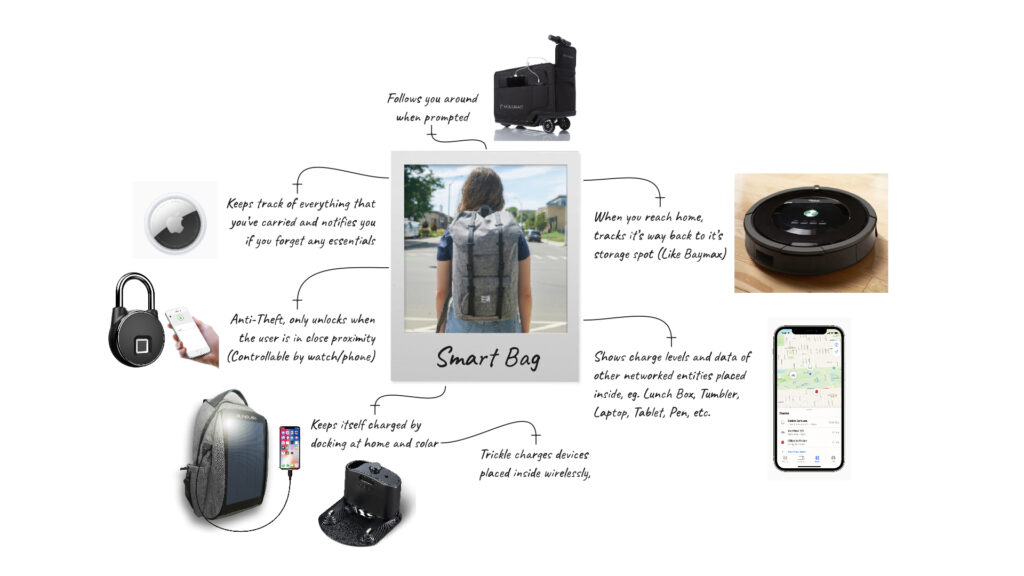
Building the script
The approach towards envisioning these entities involved the use of design fiction (Bleecker, 2006) by drawing on data gathered from the process of analysing everyday objects and interactions. Networked and non-networked objects were identified into a curated list of “things”, enabling speculation of how they can be networked. To represent these entities, cardboard rectangles were placed to represent a lo-fi phone, a call-back to the smart-mug exploration. Envisioning networked entities of the future provides a foundation for building speculative future scenarios and explores new affordances and possible user behavioural quirks.
